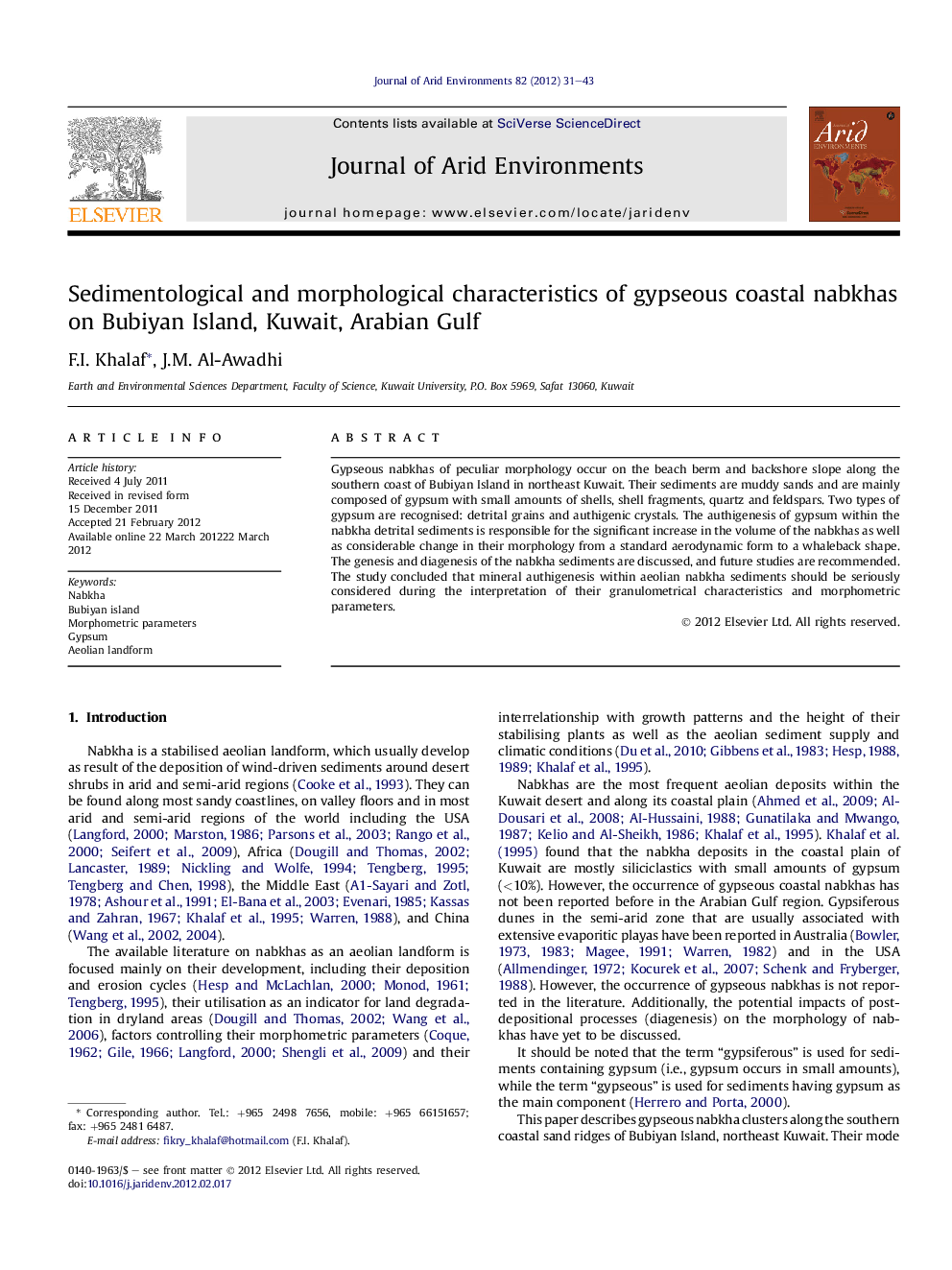| Article ID | Journal | Published Year | Pages | File Type |
|---|---|---|---|---|
| 4393363 | Journal of Arid Environments | 2012 | 13 Pages |
Gypseous nabkhas of peculiar morphology occur on the beach berm and backshore slope along the southern coast of Bubiyan Island in northeast Kuwait. Their sediments are muddy sands and are mainly composed of gypsum with small amounts of shells, shell fragments, quartz and feldspars. Two types of gypsum are recognised: detrital grains and authigenic crystals. The authigenesis of gypsum within the nabkha detrital sediments is responsible for the significant increase in the volume of the nabkhas as well as considerable change in their morphology from a standard aerodynamic form to a whaleback shape. The genesis and diagenesis of the nabkha sediments are discussed, and future studies are recommended. The study concluded that mineral authigenesis within aeolian nabkha sediments should be seriously considered during the interpretation of their granulometrical characteristics and morphometric parameters.
► Gypseous nabkha fields occur along the southern coast of Bubiyan Island, Kuwait. ► They are composed of gypsum and few grains of shell fragments and siliciclastics. ► Two types of gypsum are recognized, detrital grains and authigenic crystals. ► Gypsum authigenesis results in volume increase and change in morphology.
